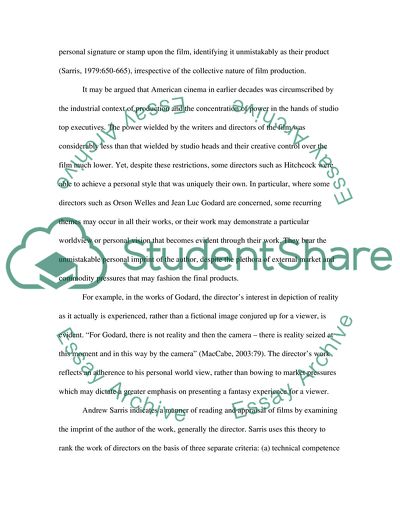Cite this document
(Theories of Authorship Term Paper Example | Topics and Well Written Essays - 1250 words, n.d.)
Theories of Authorship Term Paper Example | Topics and Well Written Essays - 1250 words. https://studentshare.org/visual-arts-film-studies/1546988-do-you-think-that-theories-of-authorship-are-incompatible-with-the-industrial-context-of-film-production
Theories of Authorship Term Paper Example | Topics and Well Written Essays - 1250 words. https://studentshare.org/visual-arts-film-studies/1546988-do-you-think-that-theories-of-authorship-are-incompatible-with-the-industrial-context-of-film-production
(Theories of Authorship Term Paper Example | Topics and Well Written Essays - 1250 Words)
Theories of Authorship Term Paper Example | Topics and Well Written Essays - 1250 Words. https://studentshare.org/visual-arts-film-studies/1546988-do-you-think-that-theories-of-authorship-are-incompatible-with-the-industrial-context-of-film-production.
Theories of Authorship Term Paper Example | Topics and Well Written Essays - 1250 Words. https://studentshare.org/visual-arts-film-studies/1546988-do-you-think-that-theories-of-authorship-are-incompatible-with-the-industrial-context-of-film-production.
“Theories of Authorship Term Paper Example | Topics and Well Written Essays - 1250 Words”. https://studentshare.org/visual-arts-film-studies/1546988-do-you-think-that-theories-of-authorship-are-incompatible-with-the-industrial-context-of-film-production.


